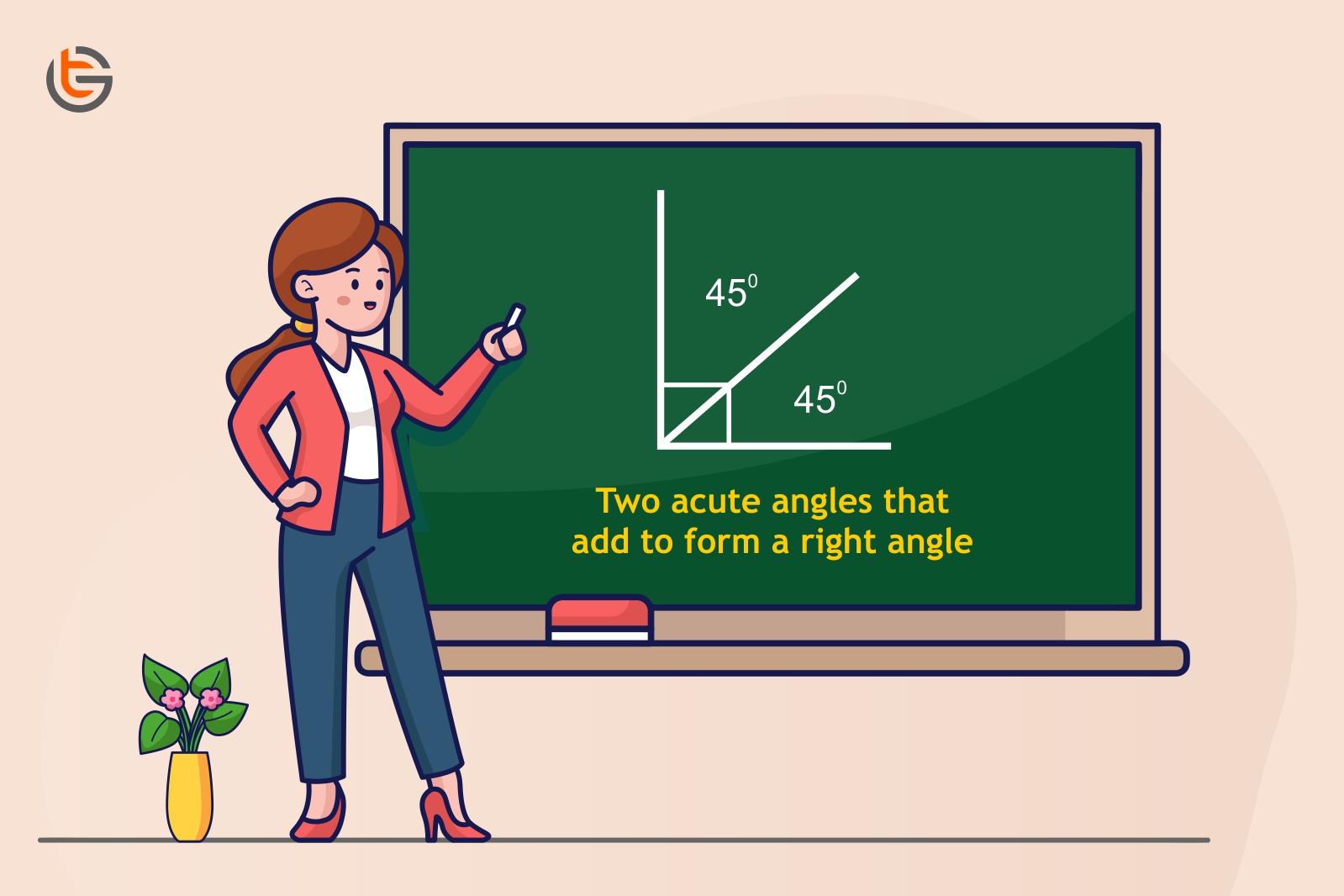Enrich your knowledge with our informative blogs
What does complementary mean in math?

The word complementary in English means something that completes and brings perfection. In maths, two angles are said to be complementary when they add to give 90 degrees. That means these two angles together form a right angle.
For example:
Let ∠C =40 degree
∠D = 50 degree
Now ∠C + ∠D = (40 + 50 ) degree
= 90 degrees
Therefore, both angles C and D are complementary angles as they are making a total of 90 degrees.
Also, note that each angle of the complementary angles is called the “complement “ of the other angle.
If, ∠A + ∠B = 90 degrees
Then we can conclude that ∠A is the complement of ∠B and vice versa.
In the above diagram let ∠AOB = 60 degree and ∠BOC = 30 degree
∠AOB + ∠BOC = 90 degree which means they are complementary angles.
Types of Complementary Angles
· Adjacent Complementary Angles
Two angles are said to be adjacent complementary if they have a common vertex and common arm and their sum is 90 degrees. In the above figure, both angles (∠AOB & ∠BOC ) are adjacent complementary as they have a common vertex (O) and common arm (OB).
· Non – adjacent Complementary Angles
Two angles are known as to be non – adjacent complementary angles if they don’t have a common vertex and common arm but their sum is 90 degrees.
∠AOB = 45 degrees and ∠CDE = 45 degrees.
∠AOB + ∠CDE = 90 degrees
In above figures, though the sum of both the angles is 90 degrees but these angles don’t have common vertex and common arm. So, they are Non –adjacent complementary angles.
Properties of Complementary Angles
- Three or more angles cannot be complementary even if their sum is 90 degrees.
- If two angles are complementary each angle is called “ complement“ of other angle.
- Two acute angles of a right-angled triangle are complementary.
- Two complementary angles can be either adjacent or non – adjacent.
How to find the complement of an Angle?
Just subtract the angle from 90 degree to get its complement angle.
This means that, the complement of ∠x is ∠90 – x.
The formula becomes:
Complement ∠x = 90 – ∠x
For Example:
- Q) Find the complement of angle 20 degree?
Sol) Complement of angle 20 degree = ( 90 – 20 ) degree
= 70 degree
Facts about Complementary Angles:
- Two right angles cannot complement each other as their sum will be more than 90 degree.
- Two complementary angles are acute but two acute angles may or may not be complementary.
- Two obtuse angles cannot complement each other.
Applications in mathematics
A 90-degree angle is known as right angle which we will find in many geometric shapes like square, boxes, cuboids, cubes, ramps etc. The two angles don’t have to be just next to each other to be complementary, but if they are, you will automatically come to know as they form a right angle.
There is a special relationship between all three angles of triangle too. We know that, when we add all angles of a triangle, they sum to 180 degrees. In a right-angled triangle, you already know that one of those angles is 90 degrees. That leaves 90 degrees to be distributed between the other two angles which means they are complementary.
Read More – Mathematics Questions
View More – Useful links for Your Child’s Development

Unleash the Power of visualization to break tough concepts
Wanna be the next Maths wizard? Discover the new way of learning concepts with real-life Visualization techniques and instant doubt resolutions.
Categories
Recent Posts
- List of the qualities you should look for in your tutors?
- What is the most useful formulas in math?
- Describe the process of eating to defecation of food?
- Difference between the natural and artificial active response by the immunology system.
- Explain the different circle theorems
- How are nerve cells adapted to their function?












